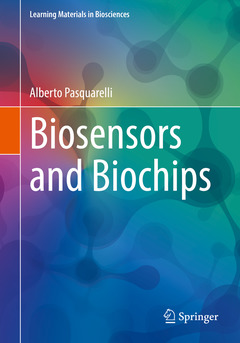Biosensors and Biochips, 1st ed. 2021 Learning Materials in Biosciences Series

This textbook describes the basic principles and mechanism of action of biosensor systems, and introduces readers to the various types of biosensors; from affinity biosensors to catalytic, optical and label-free biosensors, the most common systems are explained in detail. Dedicated advanced sections focus on biochips and genome sequencing methods as well as organs-on-a-chip.
The textbook helps readers to understand the elementary components of biosensors, and to identify and illustrate each function in the biosensor information flow, from recognition to transduction and transmission. Furthermore, readers will receive guidance in critically analyzing published studies on biosensor research, helping them to develop appropriate concepts and independently propose their own solutions.
The textbook is intended for master?s students in bioengineering, biophysics, biotechnology and pharmacology that need a solid grasp of biosensor system technologies and applications, as well as students in related medical technological fields.
Dr. Alberto Pasquarelli is senior researcher in the “Institute of Electron Devices and Circuits” and lectures on “Biosensors and Biochips” and “Solid-state Sensors” at Ulm University. He studied at the university "La Sapienza" in Rome and received his doctorate in physics in 1984. Before moving to Ulm University , Dr. Pasquarelli worked at the "physical technical federal institute" (PTB) in Berlin to design biomedical instruments and later at the CNR (Italian Research Council) as a researcher in the field of superconducting instrumentation, with special emphasis on biomagnetism.
Detailly explains the mechanisms of a biosensor system
Explains the various forms of a biosensor and their application
Illustrates miniaturization and arraying features of biochips
Discusses their usage, advantages and disadvantages in different market sectors
Date de parution : 11-2021
Ouvrage de 328 p.
16.8x24 cm
Thème de Biosensors and Biochips :
Mots-clés :
Bioreceptor; Transducer; Biosensor components; Biosensor application fields; Development of biosensors; Biosensor market potential; Environmental monitoring; Food quality control with biosensors; Biomedical application of biosensors; Protein-based receptors; DNA-receptors; Receptors based on whole cells; Understanding biosensors; Applications of biosensors; Nanomaterial



